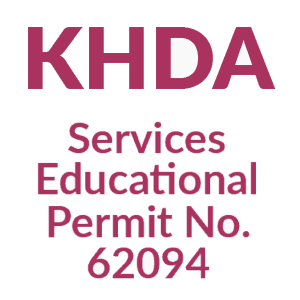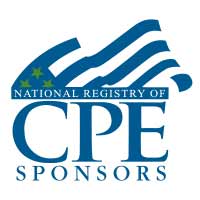Classroom Sessions:
| Date | Venue | Fees | |
|---|---|---|---|
| 29 Jul - 02 Aug 2024 | London - UK | $5,950 | |
| 21 - 25 Oct 2024 | Dubai - UAE | $5,950 |
Online Sessions:
| 21 - 25 Oct 2024 | Online | $3,950 |
INTRODUCTION
It is universally recognised that for any company to succeed it must take a proactive approach to risk management. Over the last few years Companies and a number of Countries legislators have been focusing on Process Safety as a method to reduce the risks posed by hazardous industries. Process Hazard Analysis (PHA) is recognised as being a critical tool in the implementation of a successful risk management system.
As Hazard and Operability (HAZOP) studies are now recognised world-wide as being the qualitative risk assessment methodology of choice in the Process Industries, there will be additional focus on this specific aspect of Process Hazard Analysis.
In this GLOMACS Health & Safety training course, the delegates will learn:
- How to Apply Advanced Risk Assessment Techniques?
- Mechanics of Dispersion, Fire, Explosion and Toxic Releases
- The Concept of Quantified Risk Assessment “QRA”
- Hazard and Operability (HAZOP) Study Methodology
- HAZOP Team Leadership
Objectives
Delegates attending this GLOMACS Health & Safety training course will:
- Understand the concepts of Risk Assessment and Risk Management
- Understand the estimation and evaluation of risks - Qualitative, Semi-Quantitative and Quantified Risks
- Techniques for Hazard Identification and Analysis - Check-Lists, Risk Profiling, HAZOP, FMEA and Task-Based Risk Assessment
- Cause-Consequences Analysis - The Role of Fault Trees and Event Trees in Accident Prevention
- Understand HAZOP studies their benefits and their short comings
- Understand the requirements of a Team Leader or Facilitator, scribe and team members during HAZOP studies
- Be able to facilitate a HAZOP study
Training Methodology
Participants will learn by taking part in exercises, syndicate and group workshops, as well as looking at case studies and real life situations.
Organisational Impact
In addition to the professional development of staff, the organisation should be able to prioritise resources to demonstrate that process risks are adequately controlled.
Personal Impact
Attendees will be able to apply skills learnt from this Health & Safety training course on Advanced Process HAZOP at a practical level to identify sources of major hazards and to prioritise decisions for their control.
WHO SHOULD ATTEND?
- HSE Technical Personnel
- Project Engineers
- Maintenance Personnel
- Process Engineers involved in design and modification
- Instrumentation and Control Engineers
DAY 1
Introduction to Risk Assessment
- Training Seminar Introduction: Delegate and Instructor Introductions; Training Seminar Objectives
- The Concepts of Hazards, Risk and Risk Assessment
- Methods for Risk Evaluation
- Integrating Risk Assessment within Risk Management
- Qualitative, Semi-Quantitative and Quantitative Risk Assessment Methodologies
- Feedback and Review of Day 1
DAY 2
Risk Assessment Techniques: HAZOP
- Introduction to Hazards Identification and Analysis Techniques
- Techniques for Hazard Identification and Analysis – HAZOP
- Where and When to Use HAZOP and the Requirements for a Successful HAZOP Study
- Team Composition for HAZOP Studies
- Guide Words and Process variables used for HAZOP Studies
- Report Back and Review of Day 2
DAY 3
HAZOP Leadership Techniques
- HAZOP Team Leader / Facilitator Requirements
- HAZOP Scribe Requirements
- Facilitating HAZOP Studies - do’s and don’ts
- Information required to allow Successful HAZOP Studies
- Review of Commercial Software used for HAZOP and Management of Change ‘MOC’
- Report Back and Review of Day 3
DAY 4
Consequence Analysis
- Theory Behind Fire, Explosion and Toxic Dispersion Modelling Utilised in Quantitative Risk Assessments
- Types of Fires and their Effects on People and Equipment
- Types of Explosions and their Effects on People and Equipment
- Review of Software available for Consequence Calculations
- Report Back and Review of Day 4
DAY 5
The Role of QRA
- Introduction to Quantified Risk Assessment “QRA”
- The Role of Event Tree Analysis in Scenario Development
- The Role of Fault Tree Analysis for Multi-causation Analysis
- Applications for ETA and FTA
- Failure Data for Use in QRA’s
- Societal Risk and Individual Risk
- Review of Software available for Quantitative Risk Assessments
- Report Back on Day 5 and Discussion
- Programme Review and the Way Ahead
- On successful completion of this training course, GLOMACS Certificate will be awarded to the delegates
- Continuing Professional Education credits (CPE) : In accordance with the standards of the National Registry of CPE Sponsor, one CPE credit is granted per 50 minutes of attendance
Endorsed Education Provider
GLOMACS is registered with the National Association of State Boards of Accountancy (NASBA) as a sponsor of continuing professional education on the National Registry of CPE Sponsors. State boards of accountancy have final authority on the acceptance of individual courses for CPE credit. Complaints regarding registered sponsors may be submitted to the National Registry of CPE Sponsors through its website: www.NASBARegistry.org



